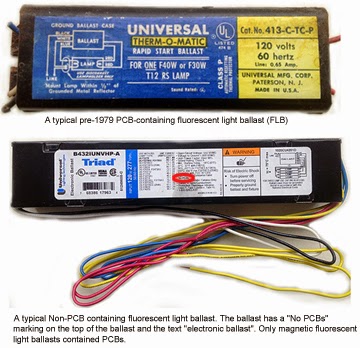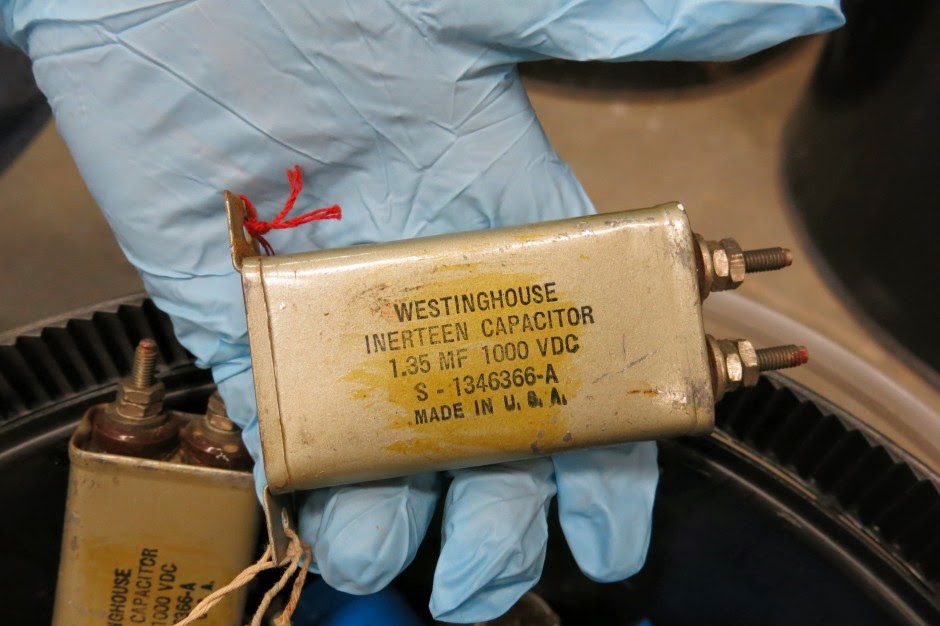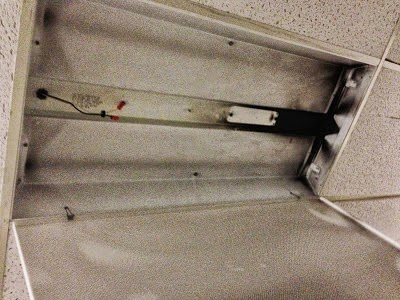Many of Metropolitan’s
clients ask our remediation experts to evaluate the appropriateness and cost of
remediation decisions, estimate future liabilities, and apportion costs among
potentially responsible parties.
Our
experts rely on forensic methods developed in-house and/or widely used in
practice, hands-on practical experience and knowledge of rigorous financial and
engineering models to conduct such cost evaluations and cost apportionment.
Metropolitan scientists have been supporting
clients in developing technically sound apportionment strategies and obtaining
appropriate evidence for more than 30 years. This work has resulted in
successful, quantitative apportionment of chemical inputs to CERCLA, RCRA and
state sites as determined by the courts.
The common questions posed to us by the clients include:
·
What is the
source of the contamination?
·
What are the
characteristics of each source?
·
Who is
responsible for each source?
·
What is my
cost?
Metropolitan
staff has been involved in numerous cases where liability and cost allocation
are evaluated using strict review of the National Contingency Plan (NCP). These cases arise from environmental cleanup
and restoration project disputes under the Comprehensive Environmental
Response, Compensation and Liability Act (CERCLA), and also include natural
resource damage (NRD) claims for restoration n costs.
Projects have included
commingled groundwater contaminant plumes, large river and urban bay projects
with multiple contributing parties, waste landfills, mines, and other
contaminated sites. This work has involved investigation of potentially
responsible parties, historical site reconstruction, financial analyses,
database development, and environmental forensics.
In one recent case involving overlapping various petroleum product
plumes (crude oil, naphtha, gasoline), we apportioned the remediation costs by
identifying the constituents in the subsurface and the free product,
identifying most likely sources, and apportioning responsibility based on the
relative amounts of the contaminants at the site.
To that effect, we divided the site in
contamination zones, reviewed existing TPH data, performed additional TPH
analyses in each zone, and averaged crude oil, gasoline and naphtha percentages
for each zone. The cost apportionment
was accepted by all the parties involved and settled the dispute.
Evaluation
of Remedial Alternatives, REVIEW OF PAST EXPENSES AND ESTImation of Future
Liabilities AND COSTS
People in
control of the remediation process are often focused on a particular presumed
remedy or on an overly conservative remedy. Often in such cases, the cleanup costs could
have been significantly less, yet sufficiently protective, if scientifically
sound, risk-based methods had been used.
Metropolitan toxicologists and ecologists
perform site-specific analyses to support the establishment of realistic
cleanup goals, and to provide more appropriate comparisons of short-term and
long-term human health and ecological risks for different remedial scenarios.
Metropolitan
has found that our thorough and objective evaluation of project risks and
potential fatal flaws in site characterization and remedy selection provides a
sound technical basis for advising our clients about cost-effective remedial
solutions. We have worked with our
clients and the regulatory community to develop least-cost, effective
alternatives that have been used to drive business decisions pertaining to
Sarbanes-Oxley and bankruptcy requirements, while consistently receiving the
approval of regulators.
We have assisted
our clients with oversight of the development and evaluation of alternative
remedial solutions, costs, and implementation scenarios that meet the capital
demands of cash-limited businesses. Metropolitan has no vested interest in the
selected remedy, and thus, our scientists and engineers are technically
unbiased and include thorough evaluation of site-specific constraints and
potential impacts to onsite operations and nearby human and ecological
receptors. In predicting future
liabilities, we use a variety of techniques, from probability-weighted
decision-tree analyses to Monte Carlo stochastic models.
In a recent
case, Metropolitan was retained by an industrial client to review the
environmental costs claimed by the purchaser of its former facilities as
damages under an environmental indemnification agreement established at the
time of the sale.
As part of its
analysis in this case Metropolitan reviewed technical documents, as well as,
available financial information and costs. Metropolitan was able to identify claimed
expenses which were not reimbursable under the agreement, these costs included;
routine business expenses, compliance costs and costs which pre-dated the
agreement. Metropolitan constructed a
detailed spreadsheet which applied various liability allocations, recoveries
from third-parties (including insurance recoveries) and calculated pre-judgment
interest.
Metropolitan
worked on this project for several years, first in the settlement context and
ultimately testifying at a binding arbitration. Metropolitan’s work on this project ultimately
resulted in significant savings to the client.
SAMPLE PROJECTS
MTBE Cost Allocation Cases
Metropolitan
was retained in a number of non-litigation and legal cases to allocate
responsibility for petroleum releases at service stations leading to alleged
contamination of residential wells.
Metropolitan provided alternative remedial cost estimates, performed
stable isotope and other forensic analyses to determine the petroleum sources.
CERCLA Cost Recovery Case
Metropolitan
was retained to provide expert opinions in a CERCLA cost recovery case
involving soil and ground -water contamination at a former coal tar refining
facility. Metropolitan provided opinions regarding the sources, extent and
probable remedial costs for various contaminants, including both coal tar
constituents and chlorinated solvents, and apportionment of responsibility for
remedial costs between the current and former owners/operators of the site.
Metropolitan
was able to demonstrate that our Client’s contribution to the documented soil
contamination was substantially less than claimed by the plaintiff. In addition
an evaluation of probable future cleanup costs indicated our Client’s share of the
total projected cost was substantially less than claimed. The Court found favorably for our client.
Objective Review of Environmental Claims
Metropolitan
was retained by an insurer client and an insured industrial client, to assist
them settling a claim for environmental liabilities. Our two clients requested that we provide a
fair and balanced estimate of past and future environmental costs at several industrial
plants. Metropolitan performed site visits, reviewed records at company
headquarters and at state regulatory offices, and developed site-specific
environmental estimates to complete site clean-up to risk based standards.
Within four
months of being retained, Metropolitan was successful in assisting the two clients
in reaching an amicable settlement regarding the amount of environmental costs.
By using Metropolitan as an objective technical
resource, both parties saved significant in litigation costs and duplicative
consulting costs, and a settlement was reached much sooner because both parties
were starting from the same environmental cost estimate.
Cost
Allocation for PAH Contamination
Metropolitan was retained by an
insurer to review and critique the allocation method proposed by consultants
for the site owner. Metropolitan also
provided our own allocation method, based on synthesizing site-specific
historical information regarding equipment, housekeeping, tar production, and
changes in feedstock, as well as analyzing present-day contamination patterns. The claim was amicably settled by both
parties using the allocation method proposed by Metropolitan.
Remedial Options for Sediment Contaminated with PCBs
Metropolitan was retained by an
industrial client to review and evaluate potential feasibility study remedial options
for sediment PCB cleanup, their cost, and risk of implementation. The work included detailed evaluation of costs
beyond the standard feasibility study analysis of –30 to +50 percent.
Metropolitan’s Pledge
Our goal is to help you resolve the
claim at the lowest possible transaction cost.
Since transaction costs are, on average, fifty to seventy five percent
of the claim, Metropolitan believes that the emphasis should be placed in
reducing the transaction costs by collecting high quality data early on to
ensure unnecessary challenges by the insured and/or other insurance carrier,
should the claim is subrogated.
We know that you want the facts; that
you want them fast; that you want uncompromised quality of the deliverable; and
at a rock bottom price. Metropolitan’s forensic professionals are second to none and
are dedicated to fast, efficient and effective response and creating a product
of uncompromising quality and value.
Metropolitan is ready to assist you
with a number of forensic engineering or age-dating determinations or
evaluations to insure that the proper coverage trigger or period has been
determined. We also have the scientific
expertise to determine whether the releases were historic in nature, whether
they were sudden or accidental, as well as to be able to differentiate plume
contributions from various sources.
We are ready to assist you with E&O
claims and/or construction defect claims.
Metropolitan will also use
proven forensic techniques in
the determination of the cause, origin, and extent of foundation/soil movement,
grating/drainage, structural failures, water intrusions, construction defects
and other failures. Our job is to find out what happened and why,
from the cause and origin through the extent of loss. Metropolitan will be able to point the way
toward a speedy disposition of the claim.
Metropolitan Engineering, Consulting &
Forensics (MECF)
Providing Competent, Expert and Objective
Investigative Engineering and Consulting Services
P.O. Box 520
Tenafly, NJ 07670-0520
Tel.: (973) 897-8162
Fax: (973) 810-0440
To unsubscribe from future technical blogs and announcements, please
reply to this email with the word “unsubscribe” in the subject line.
Metropolitan appreciates
your business.
Feel free to recommend our services
to your friends and colleagues.
We
know you need to process damage claims quickly and knowing the facts is now
faster than ever – within 24 hours of site visit. Our Pegasos Forensic Investigation Services
(PFIS) feature:
·
Expert
Forensic Investigators on-site.
·
Defensible,
Readable, Conclusive Reports.
·
Fixed-Prices
starting at $499 per chimney or roof inspection (volume discounts are also
available). Flood loss assessments start
at $999.0. HVAC equipment only
inspections start at $299 for local (within one hour one-way drive)
assignments.
·
10-State
Coverage Area.
·
All
of our employees and associates are subjected to full FBI background
investigations and security clearance.









